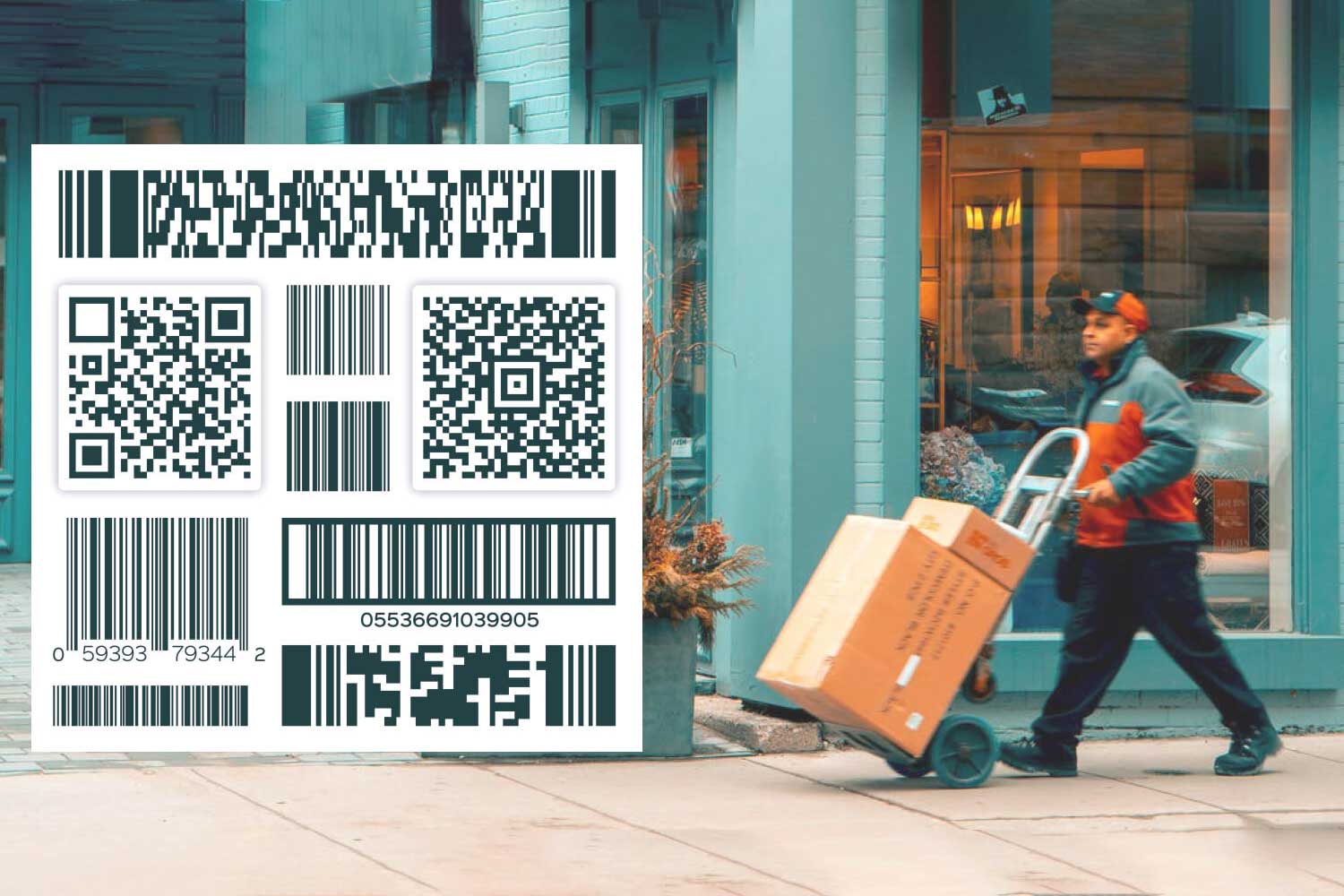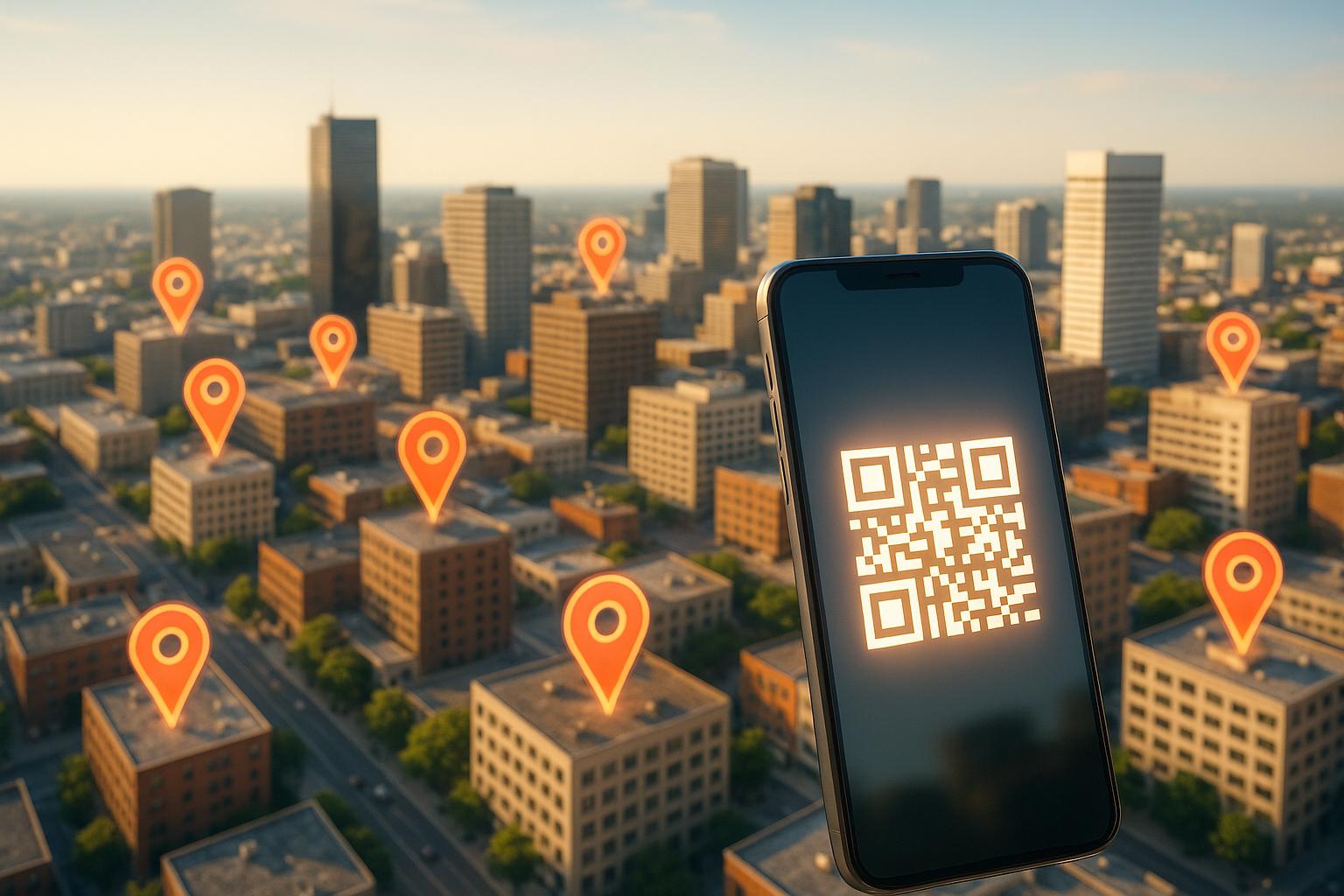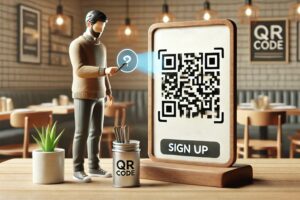Voice-activated QR codes combine QR scanning with voice interaction, making information accessible to everyone, especially individuals with disabilities. Here’s what you need to know:
- What They Do: These QR codes connect users to voice platforms, enabling hands-free interaction through voice commands.
- Who Benefits: People with visual, motor, or cognitive impairments gain easier access to product details, navigation, and services.
- Real-World Use: Companies like Unilever and Kellogg’s use these codes for accessible product information. Museums and public spaces use them for audio guides and navigation.
- How They Work: They integrate with voice assistants and screen readers, offering spoken instructions, multilingual support, and dynamic content updates.
- Why It Matters: With 1.3 billion people globally living with disabilities, this technology helps bridge accessibility gaps in healthcare, retail, events, and more.
Voice-Activated AI Agent for Digital Product Passports | whatt.io
 Key Accessibility Challenges for Users with Disabilities
Key Accessibility Challenges for Users with Disabilities
Traditional QR codes often present significant hurdles for individuals with disabilities, highlighting the need for alternatives like voice-activated solutions. These barriers impact millions daily, creating unnecessary difficulties in accessing information and services that many others take for granted. Understanding these challenges underscores why evolving QR code technology is so important.
Barriers for Visually Impaired Users
For individuals with visual impairments, standard QR codes pose serious usability issues. Since these codes rely almost entirely on visual interaction, they lack the tactile or auditory features that could enable independent use. As a result, many users are forced to rely on assistance to interact with QR codes effectively.
Even locating and aligning a QR code can be a daunting task, often requiring help . Unlike accessible technologies that integrate features like audio feedback or physical textures, traditional QR codes offer no alternative sensory input, further limiting independence. However, when clear instructions are provided alongside the code, users with low vision have reported finding QR codes helpful.
Challenges for Mobility-Impaired Individuals
For those with mobility impairments, QR codes present a different set of challenges. Limited dexterity can make the precise alignment of a smartphone camera with the code difficult. Additionally, QR codes placed in hard-to-reach locations – such as high walls, narrow spaces, or awkward angles – are particularly inaccessible for individuals with mobility limitations. This design flaw often makes it impossible for some users to interact with QR codes.
Statistics reveal the extent of the issue: nearly 40% of individuals with mobility impairments face difficulties scanning QR codes due to fine motor challenges. Despite these barriers, many wheelchair users see value in QR codes for enabling accessible navigation and information in public spaces. Disability Rights UK found that over 70% of wheelchair users appreciated how QR codes could enhance their access to public areas. These insights emphasize the need to rethink static QR code designs to better accommodate mobility challenges.
Limitations of Standard QR Codes
Beyond visual and mobility barriers, traditional QR codes often fail to address cognitive and alternative interaction needs. By relying solely on visual interaction, they exclude individuals with various disabilities when no alternative methods are provided. According to the Web Content Accessibility Guidelines (WCAG), “The interface cannot require interaction that a user cannot perform”.
Cognitive issues add another layer of complexity. Without clear instructions or context, the abstract patterns of QR codes can be confusing or meaningless. Additionally, not everyone owns a smartphone or has access to a device capable of scanning QR codes, further excluding those without the necessary hardware. Even when scanned, if the linked digital content lacks accessibility features, the QR code fails to serve its purpose.
These limitations have driven the push for more inclusive alternatives. While QR codes can simplify access to information for individuals with cognitive or learning challenges, they must be designed with accessibility in mind from the outset. Dynamic QR codes, which allow for real-time updates and enhancements, offer a promising solution that static codes cannot match.
Some major companies are beginning to address these shortcomings. In 2022, Forbes highlighted efforts by Microsoft, Starbucks, and Target to integrate QR codes that improve accessibility for people with disabilities. Additionally, Disability Rights Advocates reported a 50% increase in the use of QR codes for accessibility purposes within the disability community over the past two years, reflecting growing momentum toward more inclusive design.
How Voice-Activated QR Codes Work
Voice-activated QR codes bring together the simplicity of QR scanning and the power of voice interaction. Unlike regular QR codes that typically link to static web pages, these advanced codes connect users to voice-enabled platforms capable of processing spoken commands. Using Natural Language Processing (NLP), the system interprets speech and delivers relevant information in real time. This innovation opens new doors for interactive and accessible user experiences.
Here’s how it works: When a user scans a voice-activated QR code with their smartphone, the process doesn’t stop at displaying a webpage. Instead, it connects to a voice platform, enabling users to interact through natural speech. This makes QR codes more accessible, especially for those who might struggle with traditional interactions.
Creating a QR code with voice functionality bridges the gap between physical and digital spaces, allowing users to ask questions, request details, or navigate content using conversational language.
Integration with Voice Assistants and Screen Readers
Voice-activated QR codes integrate seamlessly with everyday assistive tools like voice assistants and screen readers. Once scanned, the QR code activates a voice assistant that can answer questions, guide users, or provide tailored content. For those relying on assistive technologies, such as screen readers, these codes offer an intuitive way to access information. Screen readers announce the presence and purpose of the QR code, while the voice-enabled features take over to handle the interaction.
This functionality is a game-changer for inclusivity. For instance, voice assistants can convert text into speech, which is especially helpful for students with dyslexia or individuals who process information better through audio. The technology supports multiple languages and even allows for custom audio uploads, making it possible for organizations to deliver branded or specialized audio content tailored to their audience.
Audio Feedback and Interaction
Audio feedback is at the heart of how users interact with voice-activated QR codes. After scanning, these systems guide users with auditory cues and prompts, ensuring they know what’s happening at each step.
For example, audio confirmation signals when an interaction is successful. This approach has already shown success in real-world applications. A major coffee chain integrated voice-enabled QR code payments, using audio feedback to speed up transactions and improve customer satisfaction.
The potential applications are vast. In healthcare, QR codes with voice capabilities can provide spoken dosage instructions or explain medication side effects. Museums can use them to offer narrated tours, allowing visitors to explore exhibits at their own pace with rich audio descriptions.
In retail, scanning a QR code on a product tag can trigger voice responses about product details, stock availability, or recommendations. Shoppers can ask questions like, “What are the ingredients?” or “Is this available in another size?” and get immediate, spoken answers. At the same time, additional information can be displayed on their device, creating a multi-sensory experience that caters to different accessibility needs.
This technology is particularly impactful for users who have yet to fully embrace QR codes. Research highlights that while 34% of people with vision impairments have independently used QR codes, 39% are aware of them but haven’t used one due to accessibility challenges. By removing these barriers, voice-activated QR codes have the potential to make QR technology more inclusive and widely adopted.
sbb-itb-74874c9
Practical Applications of Voice-Activated QR Codes
Voice-activated QR codes are reshaping accessibility, offering practical solutions in various sectors like museums, healthcare, retail, and events. These tools address challenges faced by millions, making spaces and services more inclusive.
Accessibility in Public Spaces and Museums
Museums are leading the way in using voice-activated QR codes to create more inclusive experiences. For example, the Seattle Art Museum introduced pre-recorded guided tours tailored for visitors with visual impairments. By scanning QR codes, guests can access audio guides that help them navigate exhibits and understand the artwork on display.
Similarly, the National Museum of Scotland enhanced its exhibit on "What inspired Walter Scott’s stories" by offering QR codes that play audio recordings of verses tied to the displayed objects. This approach provides an immersive experience that extends beyond visual elements. These efforts have led to a 90% increase in visitor engagement and reduced tactile graphic comprehension time by 65%. Considering that U.S. museums welcome over 850 million visitors annually, these advancements have a wide-reaching impact.
"The best use of digital is not to make you aware of the technology, but to make you aware of the art."
- Jane Alexander, Chief Information Officer at the Cleveland Museum of Art
Transportation systems are also adopting similar tools. Cities like Murcia, Madrid, Barcelona, and New York use mobile apps with sound maps to guide commuters. These apps provide audio feedback with alerts and instructions for navigating buses, trains, and trams.
Even UNESCO heritage sites like Golconda Fort have embraced this technology. QR codes at the site connect visitors to video presentations that combine sign language and visual storytelling, making the experience accessible to a broader audience. These examples highlight how voice-activated QR codes are being used in public spaces to enhance accessibility for all.
Contactless Interactions in Healthcare and Retail
In healthcare and retail, voice-activated QR codes are improving customer interactions, particularly for individuals with visual impairments. One standout example is Grailmaker Innovations‘ Spacefelt, a tool that combines waterproof QR codes with an app to help users identify items they might otherwise struggle to recognize.
In retail, this technology is streamlining processes like contactless payments. Voice recognition reduces transaction times and minimizes errors, which has become especially important in the post-pandemic era. Eliminating physical contact not only enhances safety but also builds customer trust.
Statistics show that 87% of consumers will abandon a brand after just one bad support experience, and 67% prefer self-service options over speaking with a representative. Voice-activated QR codes on products can provide instant answers, improving customer satisfaction. Businesses can also use dynamic QR codes that are easy to update with new information, such as product details or enhanced accessibility features, based on user feedback.
Event Check-Ins and Navigation
Voice-activated QR codes are transforming events by simplifying check-ins and improving navigation. Quick and efficient check-ins are crucial, as guest satisfaction drops by 50% after just a 5-minute wait. These QR codes make the process faster and more inclusive.
For visually impaired attendees, voice-activated QR codes provide clear audio cues to help them navigate venues. For those with limited mobility, these codes eliminate the need for physical interaction with devices or printed materials, offering seamless access to information.
An example of this technology in action is Tactile Images, which uses QR codes to link images with audio feedback. By scanning a QR code next to an image, users are directed to online resources with detailed auditory explanations. This has proven especially beneficial for students with visual impairments.
Event organizers can integrate QR codes into tickets, posters, and venue signage to offer real-time updates on schedules, directions, and accessibility features. These codes can also provide content in multiple languages and work with assistive technologies like text-to-voice systems and magnifying cameras.
To ensure success, placement and design are key. QR codes should be positioned at accessible heights and feature high contrast for visibility. Adding Braille labels with instructions next to the codes can further enhance usability for a diverse range of users.
Tips for Implementing Voice-Activated QR Codes
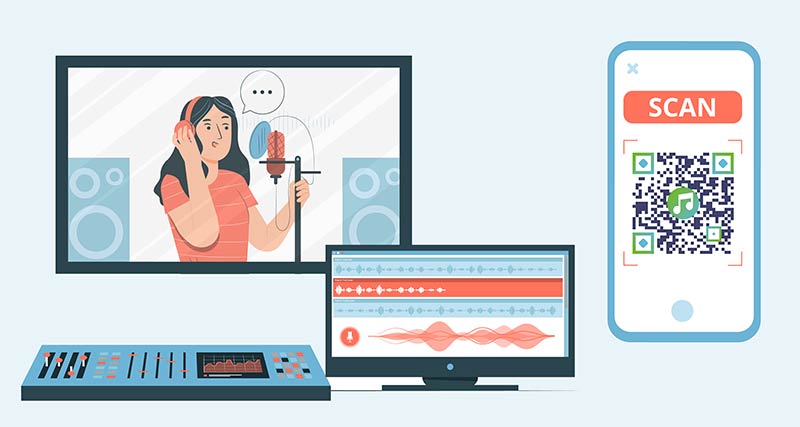 Voice-activated QR codes can be a game-changer for accessibility, but thoughtful implementation is key to creating inclusive experiences. By following these tips, organizations can ensure these codes meet the needs of all users, including those with disabilities.
Voice-activated QR codes can be a game-changer for accessibility, but thoughtful implementation is key to creating inclusive experiences. By following these tips, organizations can ensure these codes meet the needs of all users, including those with disabilities.
Create QR Codes with Accessibility in Mind
Dynamic QR codes are a great choice because they can be updated without reprinting, allowing you to make real-time adjustments for accessibility. For example, these codes can link to content like American Sign Language (ASL) videos, helping deaf and hard-of-hearing users access information seamlessly.
It’s also a good idea to support multiple languages. This is especially helpful in diverse communities or tourist-heavy areas, where non-English speakers may rely on multilingual content. Make sure your QR codes direct users to websites that cater to a variety of languages and accessibility needs.
To further enhance usability, consider adding Braille labels near your QR codes. While the QR code itself provides digital access, Braille instructions give visually impaired users context about what they’re scanning before they engage with the technology. Next, focus on where and how these codes are displayed to ensure they’re easy for everyone to use.
Optimize Placement for Accessibility
Where and how you place your QR codes can make or break their usability. Start by ensuring the codes are easy to spot and scan:
- Use a high-contrast design, like dark codes on light backgrounds, and make sure the QR code is at least 1 x 1 inch (2.5 x 2.5 cm) in size.
- Maintain a "quiet zone" around the code – this is a white border at least four times the width of one black module in the QR code. This helps scanning devices identify the code’s boundaries, which is especially important for users with assistive devices or limited motor skills.
Placement height is another critical factor. Ideally, QR codes should be at eye level for standing users, but don’t forget wheelchair users who may need lower placement. In spaces with diverse users, consider placing codes at multiple heights to accommodate both standing and seated individuals.
Clear instructions are also essential. Use tactile or visual guidance to help users, including those relying on screen readers. For users with motor impairments, provide alternative access methods like username/password options with two-factor authentication.
If QR codes lead to login processes, extend timeout limits to 3–5 minutes and include an option to reset the timer. This extra time can be crucial for users navigating with assistive technologies or those who need additional time due to cognitive differences. Once your design is in place, use analytics to fine-tune your approach.
Leverage Analytics for Continuous Improvement
Analytics can help you refine your QR code strategy by revealing how users interact with them. Unlike traditional website metrics, QR code analytics focus on data like scan frequency, timestamps, and location – insights that are particularly useful for improving physical-to-digital experiences.
"QR Code analytics empower marketers to make informed, data-driven decisions that can transform campaign outcomes." – Patrick Augstein, Customer Support Team Manager, Bitly
Track metrics like scan rates and engagement duration to identify what’s working and what’s not. For instance, if certain locations show low scan rates, consider whether placement is creating barriers for users with disabilities.
Device type data is another valuable metric. Understanding which devices users are scanning with allows you to optimize your linked content for those platforms. Since some assistive technologies work better on specific devices, this information can guide your technical decisions.
One healthcare project highlighted the power of QR code analytics for accessibility. Over a year, their dynamic QR codes logged 66 scans, 122 procedure views, and 56 video views, with 64.3% of video views directly tied to QR code scans. This data confirmed users were successfully accessing multimodal educational resources, demonstrating the effectiveness of their approach.
Use analytics dashboards to regularly review user behavior and identify areas for improvement. For example, if analytics show users frequently exit at a specific step, investigate whether that point introduces accessibility challenges.
Conclusion
Voice-activated QR codes have shown their potential to improve both accessibility and user engagement. By breaking down barriers for individuals with visual impairments, mobility challenges, or other disabilities, these codes provide access to information and services that might otherwise remain out of reach. Their hands-free functionality is a game-changer, benefiting everyone from assistive device users to professionals looking for quick, contactless solutions.
These QR codes are proving their value across industries like healthcare, museums, and restaurants, offering personalized voice responses that make interactions more engaging and inclusive. They ensure that accessibility challenges don’t stand in the way of delivering a seamless user experience for all.
Getting started is simpler than it might seem. Platforms like Pageloot allow businesses to create dynamic QR codes with accessibility features, even without advanced technical skills. The ability to update content in real time means businesses can keep improving their accessibility efforts. Add features like scan tracking and custom designs, and these QR codes become not just functional but also aligned with your brand.
"QR codes are an easy way to send customers to a digital destination. They provide the quickest digital route from point A to B." – Fortinet
Looking ahead, QR technology is set to incorporate even more advanced features, such as blockchain for security and augmented reality overlays. By adopting voice-activated QR codes now, you position your organization as a leader in inclusive technology, showing a commitment to both innovation and accessibility.
For those ready to explore, Pageloot’s free QR code generator is a great starting point. You can test the waters and, with a 14-day free trial, unlock advanced tools like scan analytics and content editing. This approach not only supports users with disabilities but also enhances the experience for all your customers. Integrating voice and visual technology today sets the stage for a more inclusive future in design and interaction.
FAQs
What makes voice-activated QR codes more accessible than traditional QR codes?
Voice-activated QR codes bring a whole new level of convenience by letting users interact with them through voice commands instead of relying on visual scanning. This technology is particularly helpful for people with visual impairments or mobility challenges, as it removes the need for physical interaction or the use of sight.
Unlike traditional QR codes that require a smartphone camera to scan, these voice-activated versions provide hands-free access to information. This makes them perfect for situations where touch or visual input isn’t practical. By making digital content easier to access, these QR codes play a key role in closing accessibility gaps and giving individuals with disabilities greater opportunities to connect with the digital world.
Which industries benefit the most from using voice-activated QR codes?
Voice-activated QR codes are reshaping industries like retail, healthcare, education, tourism, and marketing by making services easier to use and more engaging for everyone, including people with disabilities. These QR codes streamline tasks such as contactless payments, event check-ins, and personalized customer interactions, all while adding a hands-free convenience.
Take healthcare, for instance – patients can retrieve medical information or appointment details without lifting a finger. In retail, these codes enhance shopping by providing voice-guided product details, making the experience smoother and more interactive. Schools and universities are also tapping into this technology to create inclusive classrooms, where students can access learning materials simply by using voice commands. By using dynamic and customizable QR codes, businesses not only make their services more accessible but also stay ahead in delivering modern, user-friendly experiences.
How can voice-activated QR codes be made more accessible for people with disabilities?
To improve accessibility for voice-activated QR codes, prioritize clear, concise audio prompts that guide users step-by-step. These instructions should be straightforward and inclusive, accommodating individuals with speech or hearing challenges.
For those with visual impairments, consider using high-contrast visuals paired with alternative text or tactile features like braille. These adjustments help make QR codes easier to use for people with different abilities, ensuring a more inclusive experience for everyone.

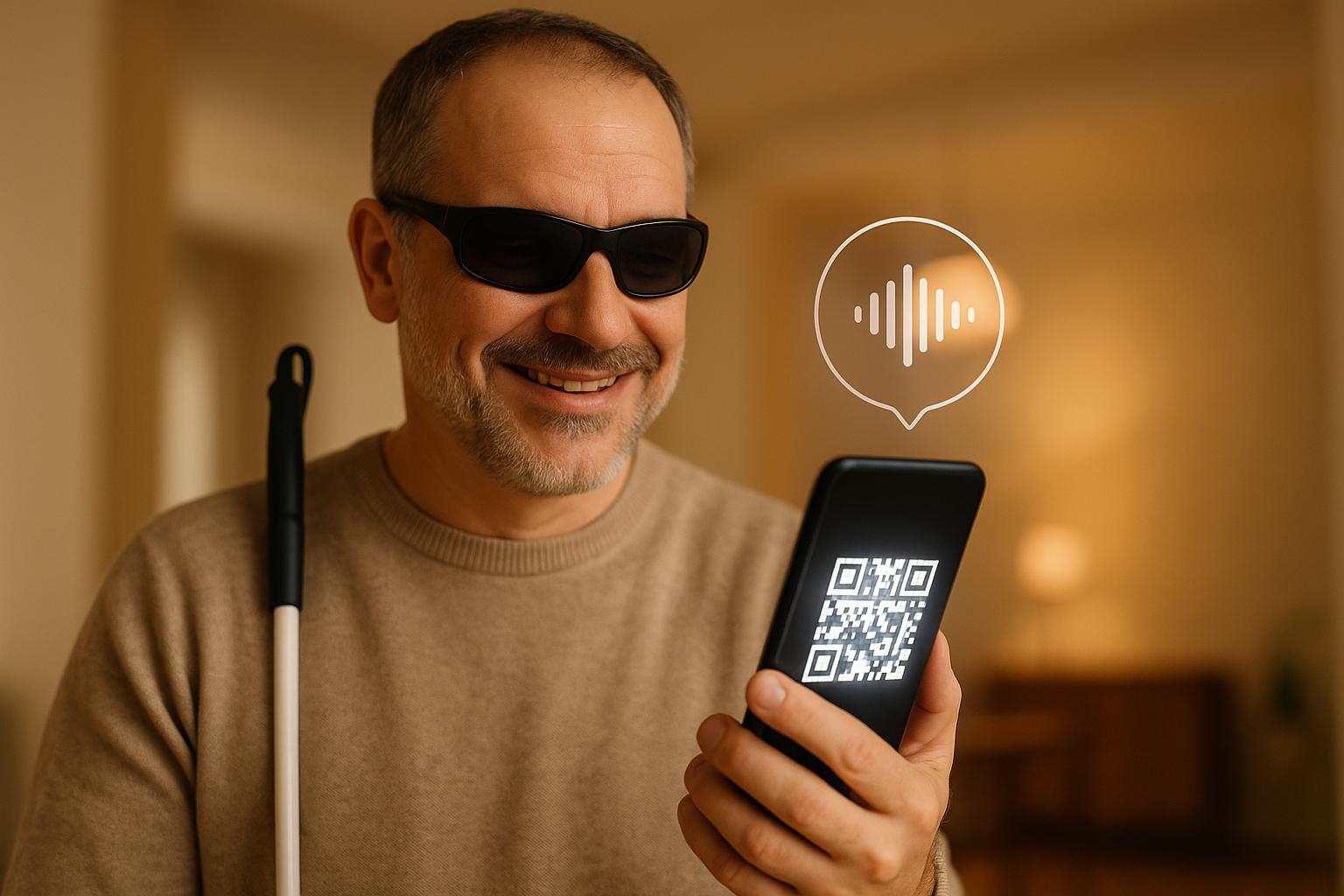
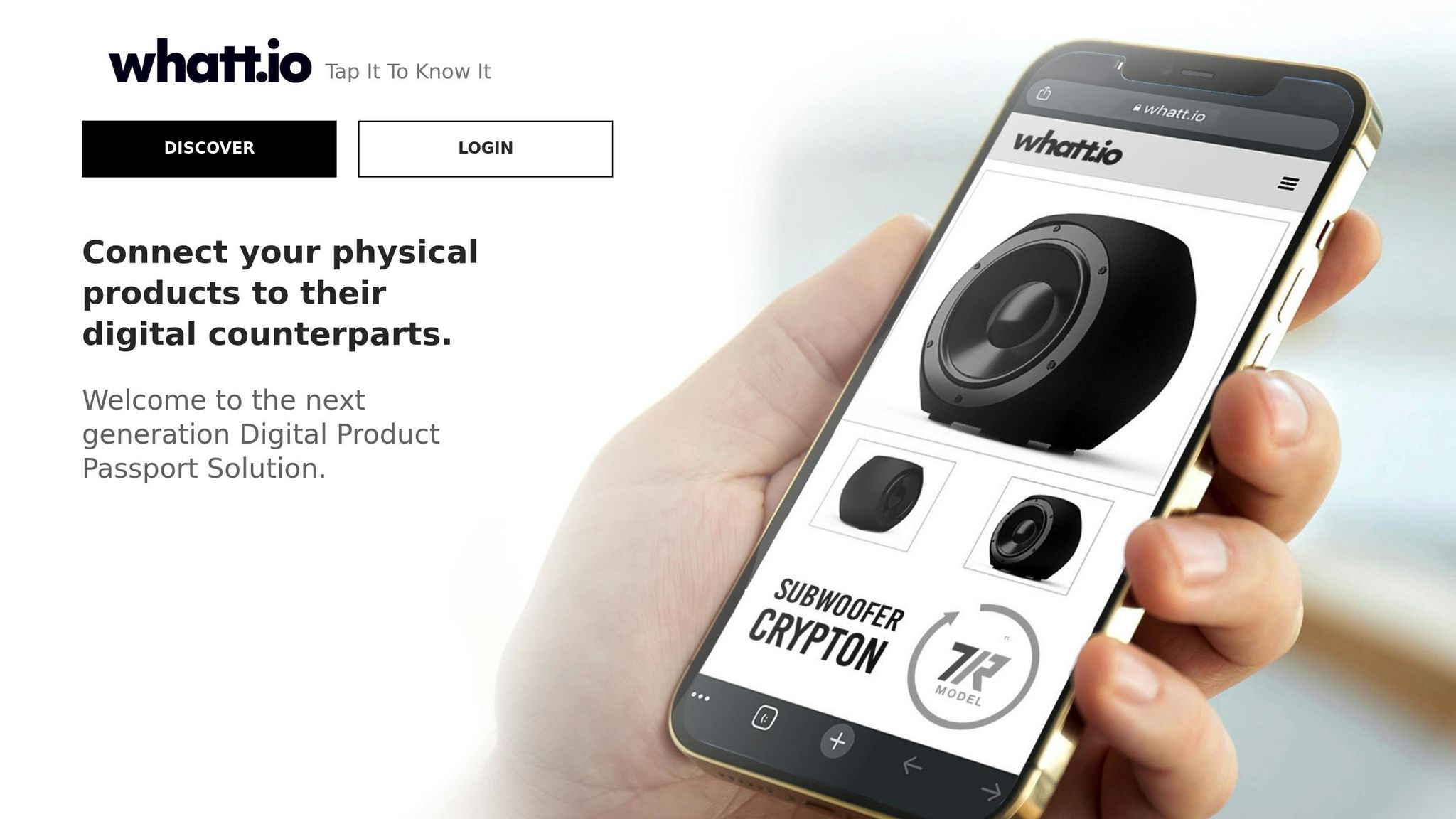 Key Accessibility Challenges for Users with Disabilities
Key Accessibility Challenges for Users with Disabilities
